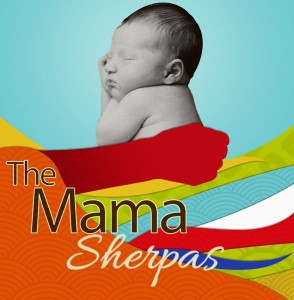In  light of Facebook’s breastfeeding censoring scandal comes a documentary aiming to normalize the birthing process–“The Mama Sherpas.” This documentary, by Brigid Maher, producer/director and professor in American University’s School of Communication, investigates America’s rising cesarean birth rate and the midwives helping solve this obstetric crisis.
light of Facebook’s breastfeeding censoring scandal comes a documentary aiming to normalize the birthing process–“The Mama Sherpas.” This documentary, by Brigid Maher, producer/director and professor in American University’s School of Communication, investigates America’s rising cesarean birth rate and the midwives helping solve this obstetric crisis.
The film shows the outstanding work nurse-midwives do in providing optimal maternal-child health care. Yet, the challenge for Maher, like many filmmakers, comes in actually convincing audience’s to alter their previous attitudes about the role of midwives in modern society.
Partnership Alliances
Undoubtedly, the most receptive audience to this film’s theme would be those in the birth community, particularly organizations with national membership. Maher reached out to national organizations, such as, the American College of Nurse-Midwives (ACNM), Coalition for Breech Birth (CBB) and International Cesarean Awareness Network as partners to find out what was missing in the narrative of midwifery.
Home vs. hospital midwives
While previous films have highlighted home birthing, there has not yet been a film about nurse-midwives working within hospitals. Noticing this discrepancy, Maher became aware of a possible tension or perception of presenting the hospital model as somehow better than the home birth model or vice-versa. Midwives present women with all their options for birth, including where to have their babies. In order to avoid this touchy issue and bring folks together, Maher reached out and worked with advocates from all aspects of the midwifery movement from certified nurse-midwives to certified midwives. In doing so, she was able to secure a coveted interview for the film with Ina May Gaskin, a renowned certified professional midwife.
What needs to be told?
As production developed, Maher realized the story ran deeper than midwives attending births. After reaching out to Penny Simkin (birth scholar, doula and author) and Nicette Jukelevics(VBAC.com), Maher understood that she needed to make sure to tell the vaginal birth after cesarean (VBAC) story and also emphasize how midwives work with low income families. Furthermore, she decided to shoot additional stories not featured in the documentary itself but that are part of the larger story of midwifery, such as Sutter Davis’s volunteer doula program.
Mobilizing an audience
Like any filmmaker, Maher wants to reach a wide audience and have the film catch fire beyond the birth community. How can she get these folks in seats to see the film? By using the birth community itself. Midwives recognize that women’s health is one of the most critical health issues of our time and that much of the everyday work midwives engage in reflect this. Maher’s film gets to the heart of these social issues, and by universalizing the story, can attract audiences who are interested in all health policy and related social issues.
Maher hopes festivals will also recognize “The Mama Sherpas” is more than just a niche birth film and can program it as a healthy living story that will attract a broad audience. The film already has a large following garnered through two Indiegogo campaigns as well as an active social media presence. Maher plans to take two distribution avenues over the next year: seek mainstream recognition through the spring and summer 2015 festival circuit followed by community mobilization through community based screenings beginning in fall 2015.
Maher’s success in building partnerships across the varied positions has enabled her to call upon these partner organizations and communities to mobilize their audience base in support of organizing screenings of the film. So far, birth educators in over 20 major cities are eager to set-up large screening events around her film. This number continues to grow. For more information on “The Mama Sherpas,” check out the film’s trailer and website.
